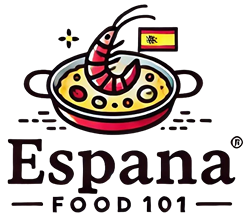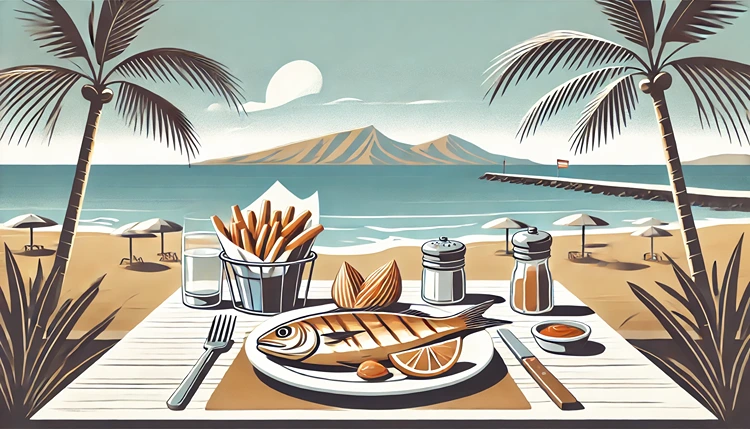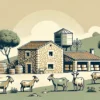When you think of Spain, it’s easy to get lost in the rich culinary landscape that includes iconic dishes like paella, gazpacho, or tapas. However, Spain’s diverse gastronomic offerings extend far beyond its mainland. The Canary Islands, an archipelago located off the northwest coast of Africa, present a unique blend of flavors, ingredients, and cooking techniques that reflect their coastal setting and cultural history. Let’s explore the delightful coastal dishes you can only find in the Canary Islands and discover why they hold such a special place in the hearts of both locals and visitors.
What Makes Canary Island Cuisine Unique?
Due to their geographical isolation and proximity to Africa, the Canary Islands have developed a distinctive culinary identity that combines traditional Spanish elements with influences from Latin America, Africa, and even Portugal. Seafood plays a prominent role, as it should in any island cuisine, but the way it’s prepared in the Canaries sets it apart from mainland Spanish seafood dishes.
In addition to seafood, the islands are known for their use of locally grown produce, unique cheeses, and sauces that add depth and flavor to meals. The abundance of fresh ingredients sourced from both land and sea, combined with traditional cooking methods passed down through generations, makes Canary Island dishes both simple and flavorful.
What are the Best Unique Coastal Dishes Found in the Canary Islands?
Whether you’re a fan of seafood or just curious about trying something new, the Canary Islands have a dish to offer for every palate. Let’s dive into some of the most beloved coastal dishes unique to this region.
Sancocho Canario: A Local Classic
Sancocho Canario is one of the most iconic dishes of the Canary Islands. Made with salted fish, typically sea bass or grouper, this traditional dish reflects the resourcefulness of Canarian cooks. The salted fish is boiled to remove excess salt and served alongside potatoes (or sweet potatoes) and a rich, spicy sauce called “mojo” (which comes in red and green varieties). Some variations of this dish also include “gofio,” a flour made from roasted grains, which is often mixed with fish broth to enhance the meal’s flavor.
Helpful Hint:
For the best flavor, try making your own “mojo” sauce at home. Green mojo is made with cilantro, while red mojo features garlic and paprika. It’s the perfect companion to your sancocho!
What is Vieja a la Plancha?
When visiting the Canary Islands, trying Vieja a la Plancha is a must. “Vieja,” also known as parrotfish, is a local fish that’s often prepared simply but deliciously by grilling (“a la plancha”). The fish is known for its sweet, tender flesh, and it’s usually served with wrinkled potatoes (“papas arrugadas”) and the ever-present “mojo” sauce. Despite its simplicity, this dish perfectly showcases the island’s reliance on fresh, high-quality ingredients.
What Are Papas Arrugadas and Why Are They So Special?
Papas arrugadas, or “wrinkled potatoes,” are a Canary Island staple that often accompanies seafood dishes. These small, salty potatoes are boiled in heavily salted water, then dried until their skins wrinkle. The technique gives them a unique texture and an intensely flavorful bite. They are usually served with a generous helping of green or red “mojo” sauce, which adds an extra layer of flavor.
Stats:
Papas arrugadas are one of the most beloved side dishes in the Canary Islands, and locals consume an estimated 15,000 tons of these special potatoes each year. The volcanic soil of the islands is perfect for growing this unique variety.
Pulpito Frito: The Canary Island Twist on Fried Octopus
Pulpito frito, or fried baby octopus, is another seafood delight you can only experience in the Canary Islands. This dish takes fresh, tender baby octopus, batters it lightly, and fries it to crispy perfection. It’s often served as a tapa or appetizer and is best enjoyed with a wedge of lemon and a sprinkle of sea salt. The crispy exterior pairs beautifully with the soft, juicy octopus inside.
Where Can You Try Fresh Sardinas Asadas?
Sardinas asadas, or grilled sardines, are a true taste of the Canary Islands’ coastal heritage. Fresh sardines are grilled over an open flame, typically in seaside restaurants where you can smell the salt air and feel the ocean breeze. These sardines are often served with simple sides like papas arrugadas and a glass of local wine. It’s a meal that captures the essence of the island’s laid-back, coastal lifestyle.
Why is Gofio an Essential Ingredient in Canary Island Cuisine?
Gofio is more than just a food—it’s a symbol of Canary Island history. Made from ground, toasted grains like wheat or corn, this nutrient-dense flour has been a staple in Canarian diets for centuries. In coastal dishes, you’ll find gofio added to soups, mixed with fish broths, or even used as a thickening agent in sauces. It adds a nutty flavor and helps make meals more filling. Although simple, gofio’s versatility makes it an essential part of many Canarian dishes.
Wrapping Up: A Taste of the Canary Islands
The Canary Islands may be small, but their coastal cuisine is big on flavor. From the humble papas arrugadas to the more complex sancocho, these dishes reflect the islands’ rich culinary heritage and their close connection to the sea. So whether you’re a seafood lover or just curious about what the islands have to offer, the Canary Islands’ unique coastal dishes are sure to leave a lasting impression.
Next time you’re exploring the Canary Islands, don’t miss the chance to savor these one-of-a-kind dishes, prepared with love and tradition.
How is Lapas a la Plancha a Canary Island Favorite?
Lapas a la plancha, or grilled limpets, are one of the Canary Islands’ most sought-after seafood delicacies. Limpets are a type of shellfish that cling to rocks along the shoreline, and in the Canary Islands, they are often grilled and served with a drizzle of “mojo verde” (green sauce). The slightly chewy texture and briny flavor of lapas are balanced beautifully by the citrus and herbal notes of the sauce. This dish is simple, fresh, and uniquely tied to the Canary Island coastal environment.
For the best experience, lapas are typically enjoyed at beachfront eateries, where the fresh catch is grilled right before your eyes. The smokiness of the grill adds an additional layer of flavor to this already savory treat. Though not as commonly found on mainland Spain, lapas are a local favorite that embody the culinary traditions of the Canary Islands.
Helpful Hint:
If you want to bring a bit of Canary Island flavor home, try making lapas a la plancha on your own grill. Just remember to marinate them with a mix of olive oil, garlic, lemon, and parsley to mimic the island’s authentic flavors!
How Do You Prepare Ropa Vieja Canaria?
Ropa Vieja Canaria may not be the first dish you associate with coastal cuisine, but it’s a must-try for anyone visiting the Canary Islands. While “ropa vieja” (meaning “old clothes”) is a traditional dish in many Spanish-speaking countries, the Canary Island version has its own twist. In the Canaries, the dish is made using a combination of shredded beef, chickpeas, potatoes, and various spices. What sets it apart is the occasional addition of seafood, such as squid or shrimp, giving it a unique coastal flavor that’s hard to find elsewhere.
This hearty dish reflects the resourcefulness of Canarian cooks, using leftover meats and vegetables to create something deeply satisfying. Served with a side of bread to mop up the sauce, ropa vieja is a perfect example of how land and sea come together on the Canary Islands’ dinner table.
What is Caldo de Pescado and Why is it a Must-Try?
No exploration of Canary Island cuisine would be complete without mentioning “caldo de pescado” (fish broth). This traditional dish is a fisherman’s stew, made from the catch of the day and served with a variety of vegetables such as onions, tomatoes, and potatoes. The broth is rich in flavor, thanks to the addition of saffron, paprika, and local herbs, which give it a warm, comforting taste.
Caldo de pescado is often enjoyed as a main dish or even a starter at many local restaurants. Its deep flavors capture the essence of the Canary Islands’ relationship with the ocean, making it a favorite among both locals and tourists. What makes it even more unique is the way it is often served with gofio to thicken the broth, turning it into a satisfying meal that’s perfect after a day by the coast.
Why is Atún en Adobo a Canarian Staple?
Atún en adobo, or marinated tuna, is another classic coastal dish from the Canary Islands. Fresh tuna is marinated in a flavorful mix of vinegar, garlic, paprika, and herbs, then grilled or fried to perfection. The tangy marinade penetrates the fish, giving it a bold flavor that complements the tender, flaky texture of the tuna. This dish is typically served with local sides like papas arrugadas or a simple salad, making it a versatile and delicious option for any meal.
Tuna fishing has long been a part of the Canary Islands’ coastal economy, and atún en adobo reflects the local reliance on fresh, high-quality seafood. You can find this dish in many restaurants across the islands, and it remains a favorite for its simplicity and bold flavor profile.
What Role Do Local Ingredients Play in Canary Island Coastal Dishes?
The unique coastal dishes of the Canary Islands are shaped not only by the surrounding Atlantic Ocean but also by the islands’ volcanic soil and subtropical climate. Local ingredients like papas arrugadas, fresh herbs, and gofio play a key role in defining the flavors of these dishes. The freshness of the seafood combined with the richness of the island’s produce creates a distinct culinary experience that can’t be replicated elsewhere.
For instance, the volcanic soil lends a special flavor to the potatoes grown in the Canary Islands, which is why papas arrugadas taste so unique. The islands’ subtropical climate also allows for the growth of herbs like cilantro, which are essential in the creation of “mojo” sauces that accompany nearly every coastal dish. The fusion of these fresh, local ingredients with traditional cooking methods is what makes the Canary Islands’ coastal cuisine stand out.
Why is Mariscos en Escabeche a Canary Island Favorite?
Mariscos en escabeche, or seafood marinated in vinegar, is a dish that captures the bold flavors of the Canary Islands. This dish typically features octopus, mussels, or shrimp marinated in a tangy blend of vinegar, olive oil, garlic, and herbs. The marinade helps to preserve the seafood, giving it a unique texture and flavor that’s both acidic and savory.
Mariscos en escabeche is often served as a tapa, making it a popular choice for a light bite at local bars and restaurants. The preservation technique used in escabeche reflects the islands’ historical need to store food for long periods, especially for fishermen who spent days at sea. Today, the dish remains a beloved part of the Canary Islands’ culinary heritage, offering a taste of the past with every bite.
FAQs
Wrapping Up
The Canary Islands offer a truly unique coastal cuisine that’s deeply rooted in the region’s rich cultural and geographical history. From simple, traditional dishes like “papas arrugadas” to seafood delicacies like “Vieja a la Plancha” and “Lapas a la Plancha,” the islands’ culinary offerings are a flavorful testament to the close relationship between land and sea. Locally sourced ingredients, including fresh fish and produce grown in volcanic soil, define the dishes you’ll find only in the Canary Islands.







